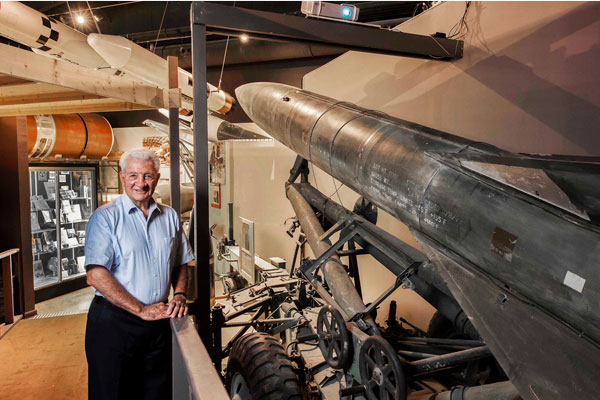Retired Sandian’s popular nuclear weapons history still taught at the Labs

Charles R. Loeber spent 50 years working in the nuclear weapons complex, with the last 20 as an employee and consultant at Sandia. He helped stand up neutron generator manufacturing in the 1990s. After that, he oriented a generation of new hires in nuclear weapons to Sandia and its responsibilities.
In that role, he taught a lot of us the history and importance of the nuclear weapons complex. We knew him as Chuck, and he was forever smiling as he went through his slides, each iteration as fresh as if he had just created it.
Chuck arrived at Sandia with an entire career in the civil service behind him. He was deeply familiar with the operations of DOE’s nuclear weapons plants and laboratories. He was gracious, generous and persistent, and he got things done. He didn’t bother arguing — just kept moving forward and explaining in patient tones why and how they needed to be done.
At the Albuquerque Operations Office since 1978, Chuck retired from DOE in 1994 and moved over to Sandia. His most recent assignments at DOE had been first to lead a study of how best to reduce the size of the nuclear weapons complex at the end of the Cold War, and then to do so. He oversaw the closure of Rocky Flats, Mound and Pinellas. He segued into the outcome from that effort at Sandia, working on the new neutron generator production assignment inherited from Pinellas.
When the nuclear weapons program launched a new hire orientation program, Chuck took a lead role, bringing in subject matter experts from across Sandia to discuss their fields. The program covered everything from the Labs’ history to its role in stockpile stewardship. He provided his speakers with feedback to ensure continuous improvement — he was both generous and crisp in his suggestions.
Retired but not resting
In 2005, Chuck retired from Sandia, but continued as a consultant. He also continued his lifetime of practical service, volunteering with the National Atomic Museum Foundation and serving as its president. Most notably, he was project manager to build the new National Museum of Nuclear Science and History, which opened at its current location in 2009. It is a fine legacy, but not his only one.
Chuck was best known and is probably most extensively remembered within Sandia for his presentations on the history of the nuclear weapons complex. Repeatedly invited to sites throughout the complex to share his presentation, he was always delighted to travel, meet new groups and tell them how this set of institutions came to be, what they do, why they matter.
As others convinced him of the value of his knowledge and the particular way he presented it, Chuck decided to capture it all in a book. He carved out personal time to translate his slides and lecture materials into Building the Bombs: A History of the Nuclear Weapons Complex. First published in 2002, the book is now in its third edition and has seen multiple printings. It is widely used as a solid introduction to the origins and functions of the Nuclear Security Enterprise.
After retiring from Sandia, Chuck continued to give his presentations to monthly audiences of new hires and old hands. He was a charming lecturer, reeling audiences in with humor and humility, letting the feats of history stand on their own while he gently nudged listeners along the path to knowledge.
Eventually, his health left him exhausted after a full day of presenting, and he stopped coming in. The course he started is still offered and well presented by knowledgeable Sandians, but it is clear that its foundation was poured by Chuck and his slides. Because of him, the course will endure, offering enlightenment on the history of the Nuclear Security Enterprise.
On May 10, Chuck left us and the rest of the world to continue on without him.